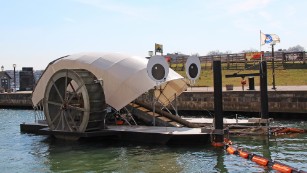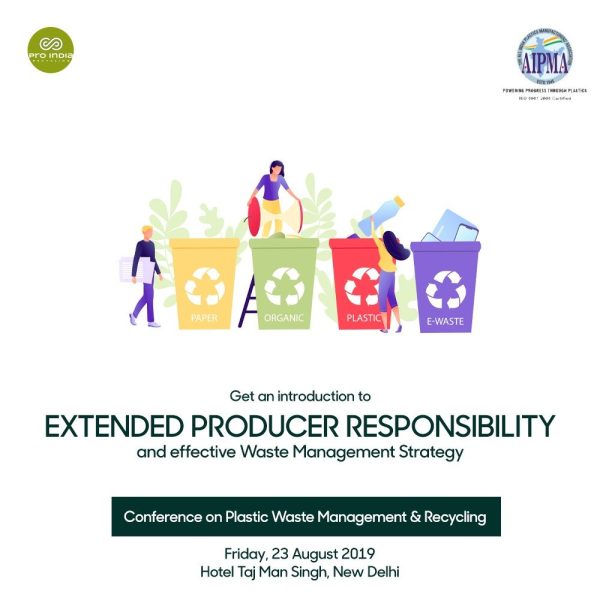An ambitious project to clean up the ocean’s plastic pollution got underway over the weekend as members of The Ocean Cleanup project began towing their system out to sea.
If it works as expected, they’ll try to take a bite out of the Great Pacific Garbage Patch — a huge collection of floating trash that’s three times the size of France, or about double the size of Texas.
The Ocean Cleanup System 001 consists of a 2,000 foot (600 meter) long floating barrier with a 10 foot (3 meter) skirt that hangs below it, under the water. It looks like a section of pipe, or a giant pool noodle — a pool noodle that’s longer than the One World Trade Center skyscraper in Lower Manhattan.
It set sail on Saturday from San Francisco, California, and is being towed 240 nautical miles off shore for a two week test to make sure that it behaves as expected in the open ocean. When it’s deployed, it will curve into a U-shape as it is pushed by the wind and waves. The slow moving system will corral the plastic floating on the surface, while fish and other ocean life can swim underneath. Smaller boats will then come and scoop up the plastic and take it back to shore, where it can be recycled.
“One of the challenges we have is we want to catch plastic, not fish,” said Joost Dubois, head of communications at The Ocean Cleanup. He said the crews will manually check the garbage to make sure they don’t accidentally catch fish or other marine animals.
“We’re trying to solve an environmental problem so we need to be sure to make sure we don’t create a bigger problem in its place,” he said.
Once the shakedown cruise is over, it will take two or three weeks to tow the system another 1,000 nautical miles to the Great Pacific Garbage Patch, where they’ll see if it actually collects plastic and if it can survive harsh winter storms.
Crews will remain with the system for the first six months, but they hope an autonomous vehicle will be able to monitor it after that. The Great Pacific Garbage Patch is the nickname for an area between Hawaii and California, where plastic and other human-made litter and debris accumulate, according to the National Oceanic and Atmospheric Administration.
It’s caused by a rotating current, called a gyre, that pulls in the trash and won’t let it go. There are several around the world. The Ocean Cleanup’s founder, Boyan Slat, told CNN earlier this year that the patch contained an estimated 1.8 trillion pieces of plastic, weighing 80,000 metric tons.
“It also is increasing, so we’ve seen exponential increase in the amount of plastic, which means it’s just going to be getting worse and worse and worse unless we clean it up,” he said.
An estimated eight metric tons of plastic wind up in the oceans every year, according to the Ellen MacArthur Foundation.
Miriam Goldstein, the director of ocean policy at the Center for American Progress, has been a critic of the program. She studied the Great Pacific Garbage Patch for her Ph.D. in biological oceanography and has been there several times.
“I would like nothing more (than) for it to work. I would really like it to be the solution to ocean plastics, but I think there are some really big questions that remain unanswered,” she said.
She said deploying such a huge device will create its own environment — barnacles and other sea life will grow on it and fish will hang out underneath it. Goldstein said it could also accidentally catch some plankton that floats on the surface.
“If they grow a bunch of gooseneck barnacles and those get killed as a consequence, I don’t think anyone really cares … that’s probably not going to mean issues for the environment,” she said. “But if they’re catching all of the plankton in a mile long swath of ocean, that does seem like a strong effect.”
She also questioned the wisdom of focusing on the plastic that’s in the middle of the ocean instead of cheaper technologies that can stop the waste from getting there in the first place.
“It’s like trying to drain a bathtub when the tap is on full force” she said.
She pointed to Baltimore’s Mr. Trash Wheel, which has removed almost 2 million pounds of trash from Baltimore’s Inner Harbor since 2014.
Goldstein said she would like to see The Ocean Cleanup bring in independent scientists to see if the project is really working.
Dubois said The Ocean Cleanup is being responsible and has tried to address these criticisms.
He said System 001 is expected to be able to recover 50 tons of plastic from the ocean per year.
They plan to deploy 60 even bigger systems that are between one kilometer and one mile long, Dubois said. They will eventually be able to gobble up a total 14,000 tons of plastic each year.
The Ocean Cleanup team thinks the fleet could extract 50% of the plastic in the garbage patch every five years.







